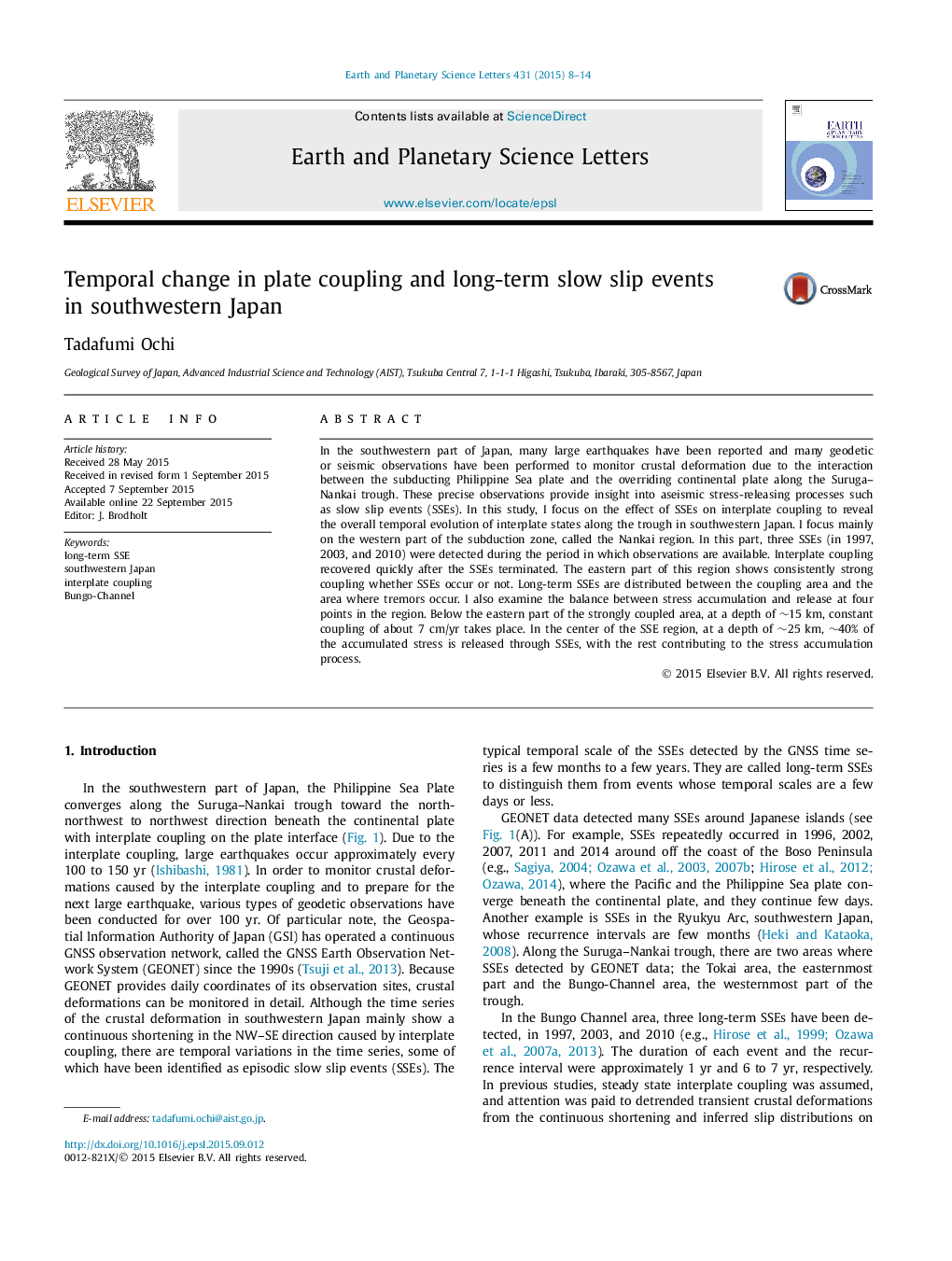| کد مقاله | کد نشریه | سال انتشار | مقاله انگلیسی | نسخه تمام متن |
|---|---|---|---|---|
| 6427767 | 1634725 | 2015 | 7 صفحه PDF | دانلود رایگان |
- I made geodetic inversions in southwestern Japan to detect long-term SSEs in Bungo-Channel.
- The amount of the SSE is evaluated from zero-coupling state.
- Each long-term SSE released about 40% of accumulated stress.
- The SSE patch rapidly recovers to full coupling after the termination of SSE.
- Relationship between long- and short-term SSEs in this area seems different from in the Tokai area.
In the southwestern part of Japan, many large earthquakes have been reported and many geodetic or seismic observations have been performed to monitor crustal deformation due to the interaction between the subducting Philippine Sea plate and the overriding continental plate along the Suruga-Nankai trough. These precise observations provide insight into aseismic stress-releasing processes such as slow slip events (SSEs). In this study, I focus on the effect of SSEs on interplate coupling to reveal the overall temporal evolution of interplate states along the trough in southwestern Japan. I focus mainly on the western part of the subduction zone, called the Nankai region. In this part, three SSEs (in 1997, 2003, and 2010) were detected during the period in which observations are available. Interplate coupling recovered quickly after the SSEs terminated. The eastern part of this region shows consistently strong coupling whether SSEs occur or not. Long-term SSEs are distributed between the coupling area and the area where tremors occur. I also examine the balance between stress accumulation and release at four points in the region. Below the eastern part of the strongly coupled area, at a depth of â¼15 km, constant coupling of about 7 cm/yr takes place. In the center of the SSE region, at a depth of â¼25 km, â¼40% of the accumulated stress is released through SSEs, with the rest contributing to the stress accumulation process.
Journal: Earth and Planetary Science Letters - Volume 431, 1 December 2015, Pages 8-14
